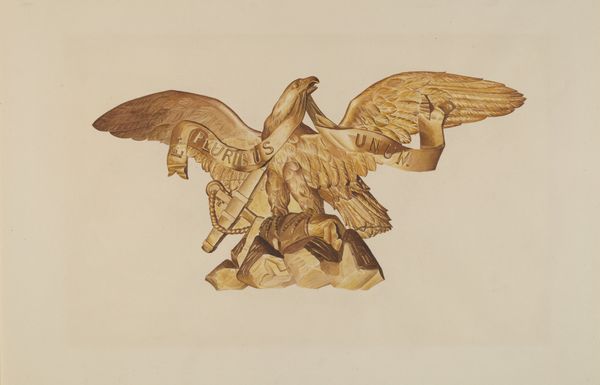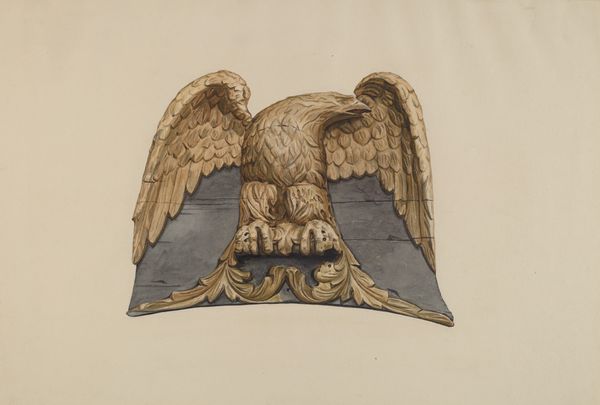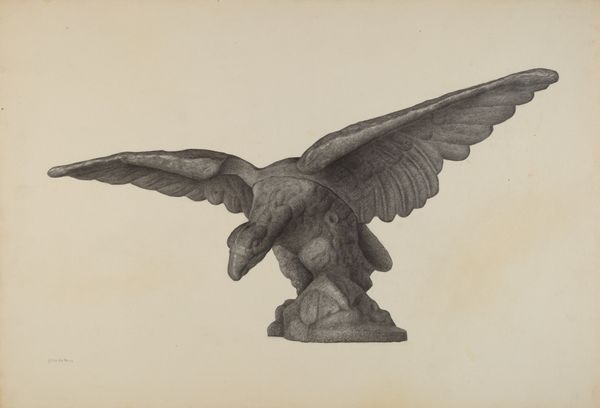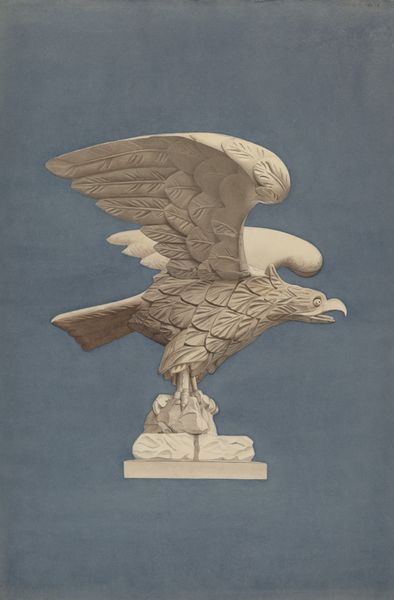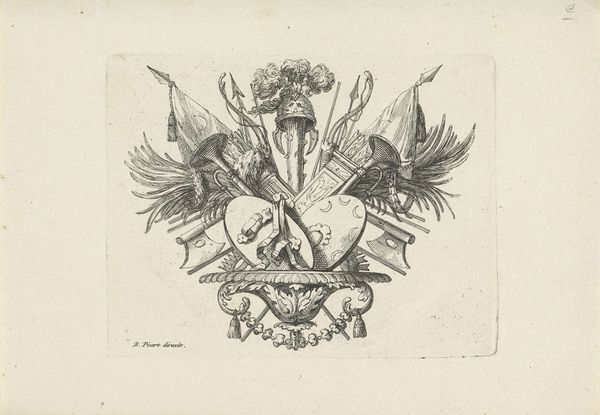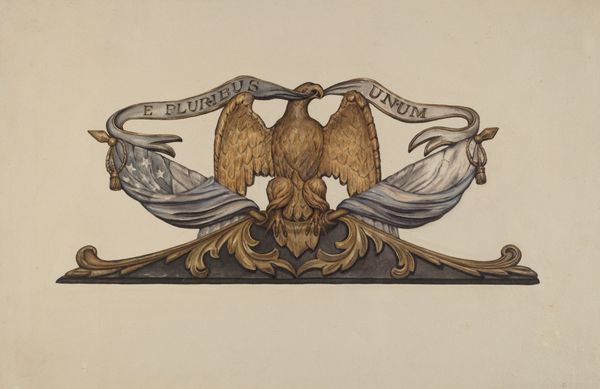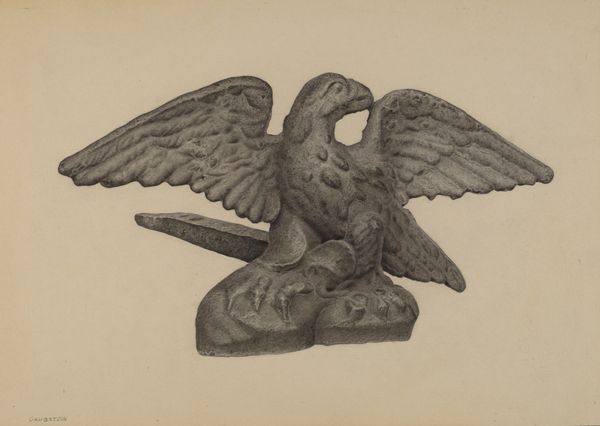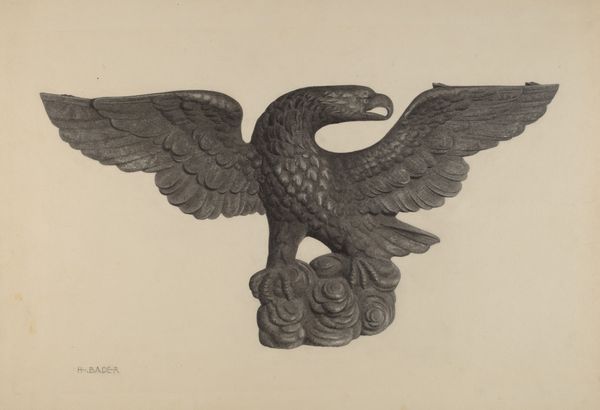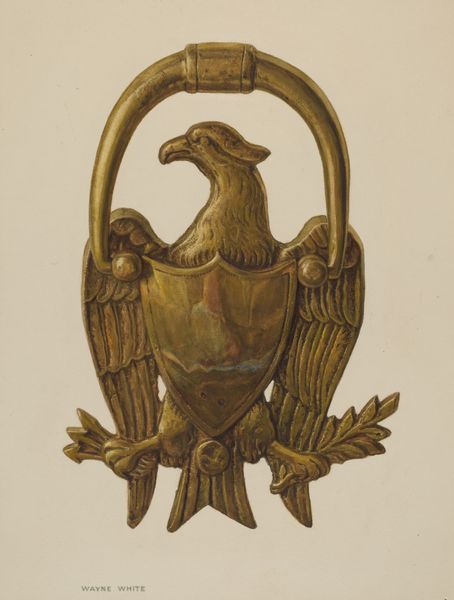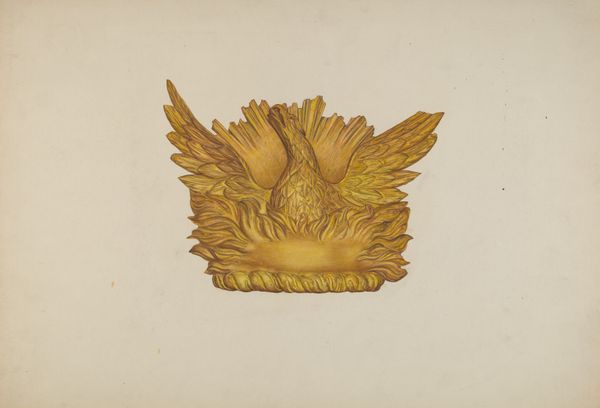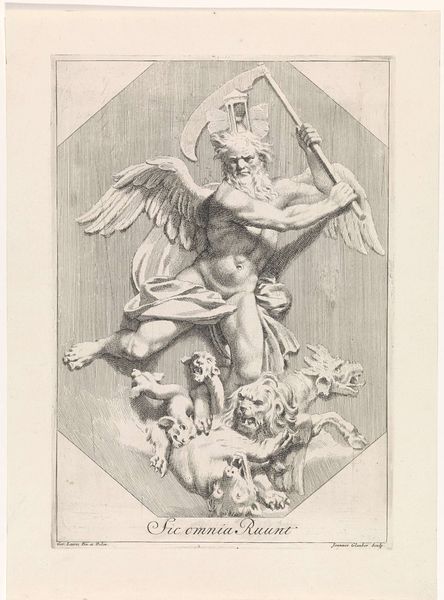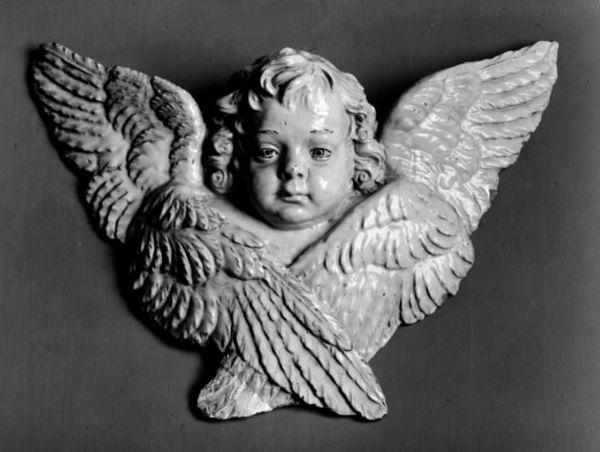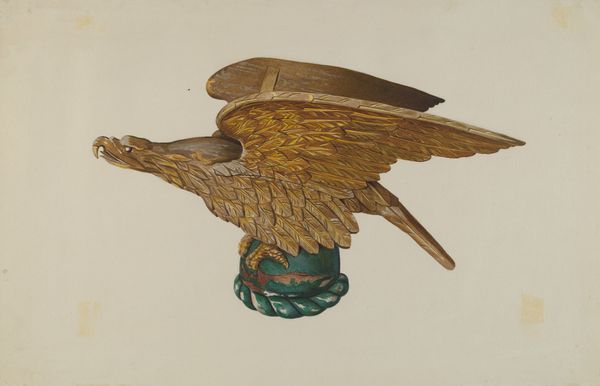
Overdoor with Eagle and Laurel Wreath (one of a pair) 1785 - 1795
0:00
0:00
metal, sculpture
#
neoclacissism
#
metal
#
figuration
#
form
#
sculpture
#
decorative-art
Dimensions: Each, 30 x 50 in. (76.2 x 127 cm.)
Copyright: Public Domain
Curator: Standing before us is one of a pair of striking metal overdoors, crafted sometime between 1785 and 1795 by the talented Giocondo Albertolli. This one is known as "Overdoor with Eagle and Laurel Wreath." What catches your eye first? Editor: It feels incredibly… assertive, wouldn't you say? That eagle's gaze is intensely proud, and the way those laurel wreaths encircle it feels almost protective. It's got a certain neoclassical power, yet there is also this… fragile beauty in the details. Curator: Ah, exactly! That blend is so characteristic of the Neoclassical movement. Albertolli was a master of ornamental design, and here you can see the classical motifs reimagined with such precise attention to detail. Consider how he has modeled each individual feather, leaf, and fold of the ribbon. Editor: It's meticulously rendered, but there’s a tension. That eagle, symbolizing power and empire, framed by the delicate, almost fleeting nature of those laurel wreaths – is it about the glory or the fragility of triumph, perhaps? It sits there just poised. Curator: Precisely! It reflects that period's fascination with not only the grandeur of Rome, but also with ideas of civic virtue and the transience of power. Those wreaths, symbols of victory, are reminders that glory can be ephemeral. Editor: The eagle is wonderful—a powerful and regal creature with clearly a decorative function. Curator: They would have originally been part of larger architectural schemes in homes—think grand doorways and rooms, expressing aspirations to civic virtue and prosperity. I imagine those spaces filled with lively gatherings, and these motifs adding an element of subtle depth. Editor: I hadn’t considered that at all, placing the object itself within a historical narrative. Knowing where it hung changes how it speaks. Now it evokes this ghost of history in a domestic surrounding. Curator: Exactly. It bridges those aesthetic concerns of composition with this historical and cultural understanding, reminding us how objects can be artifacts to interpreting the past in the present.
Comments
No comments
Be the first to comment and join the conversation on the ultimate creative platform.
